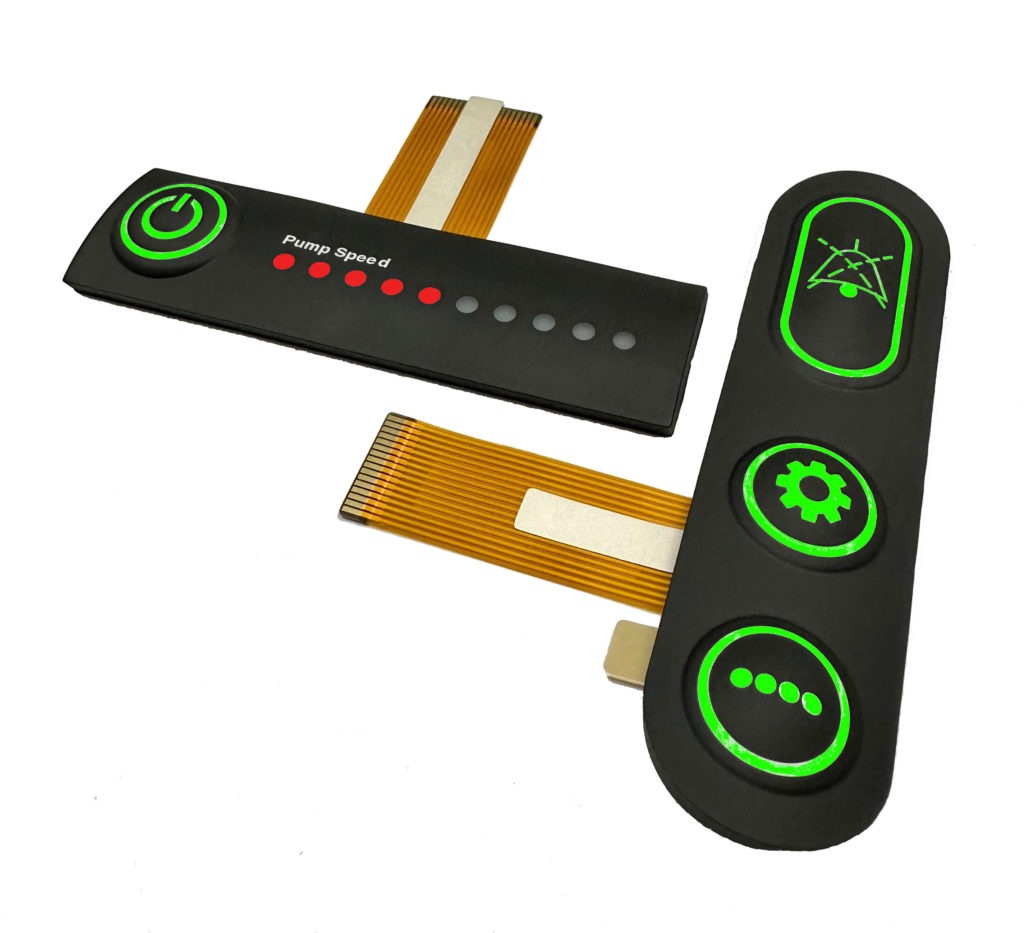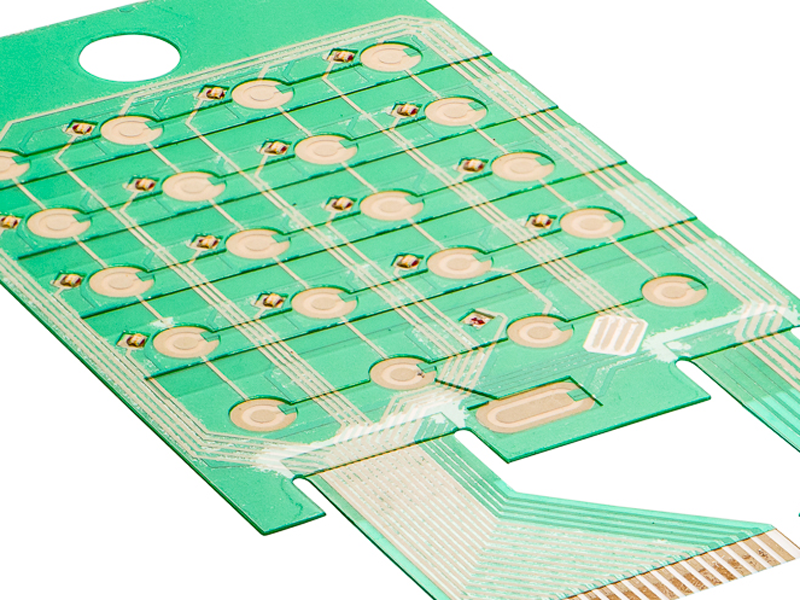Top Benefits of Using a Membrane Switch in Custom Control Panels
Top Benefits of Using a Membrane Switch in Custom Control Panels
Blog Article
Recognizing Membrane Layer Switches Over: The Trick to Reliable and resilient Controls
Membrane layer switches stand for a critical facet of modern-day user interface design, mixing performance with strength in various applications. As we explore the complexities of membrane layer switches, it ends up being clear that their role in enhancing control systems is both extensive and intricate, raising inquiries about just how ideal to take advantage of their capabilities in future innovations.
What Are Membrane Switches?
Membrane layer buttons are a sophisticated service in the world of interface innovation, incorporating capability and design perfectly. These gadgets work as a user interface between customers and digital systems, incorporating a number of elements right into a small format. Normally created from versatile, slim layers of products, membrane layer buttons are developed to reply to touch, allowing customers to engage with equipment and electronic gadgets effectively.
The primary aspects of a membrane switch include a published circuit layer, visuals overlay, and a spacer layer that prevents unintentional activation. The visuals overlay can be tailored to mirror brand identity or user choices, boosting aesthetic appeals while making sure use. Membrane layer buttons are frequently utilized in different applications, consisting of medical devices, customer electronic devices, and industrial tools, owing to their longevity and resistance to environmental factors such as wetness and dust.
One of the crucial advantages of membrane buttons is their ability to endure wear and tear, making them ideal for high-traffic atmospheres. Additionally, they are light-weight and need minimal room, enabling cutting-edge designs in product development. Generally, membrane switches over stand for a effective and sensible option for modern digital interfaces, marrying technology with user-centric style principles.

Exactly How Membrane Layer Changes Work
The operation of membrane layer switches over hinges on a basic yet reliable mechanism that translates individual input into digital signals. When a user presses the button, the top layer warps, permitting a conductive aspect in the circuit layer to make call with a corresponding conductive pad on the underside of the graphic overlay.
The style of membrane switches can differ, yet they usually integrate domes or responsive components to give responses to the customer, boosting the total experience. The products utilized in membrane layer switches, such as polyester or polycarbonate, add to their sturdiness and resistance to ecological aspects, consisting of dampness and dirt. The printed circuits are usually enveloped, which safeguards them from wear and tear over time.

Benefits of Membrane Switches
One of the main benefits of membrane layer buttons is their flexibility in design, enabling them to be customized to fulfill certain customer requirements and visual requirements. This versatility extends to numerous sectors, where various shapes, dimensions, and shades can be utilized to enhance customer interaction and aesthetic charm.
Additionally, membrane layer buttons are understood for their longevity. Created from robust materials, they are resistant to dust, moisture, and physical wear, which dramatically extends their life-span contrasted to typical mechanical buttons. This sturdiness makes them especially ideal for high-traffic environments and applications needing longevity.

Moreover, membrane layer switches offer a streamlined profile, bring about a more info here thinner layout that can be integrated right into various devices without adding mass. This attribute not just boosts the aesthetic allure but also contributes to an extra ergonomic item style.

Applications of Membrane Layer Buttons
Flexible and straightforward, membrane layer switches locate applications throughout a large range of markets, including clinical gadgets, consumer electronic devices, and industrial tools. In the clinical field, these switches are integral to devices such as analysis devices, client tracking systems, and infusion pumps, where reliability and simplicity of cleaning are important. Their capability to hold up against harsh atmospheres and keep capability makes them ideal for such applications.
In consumer electronics, membrane buttons are used in products like microwaves, cleaning equipments, and remote controls - membrane switch. Their sleek design permits intuitive individual interfaces, improving the general customer experience while offering toughness and resistance to put on and tear
Industrial equipment likewise gains from membrane layer switches, particularly in control panels for machinery and automation systems. These switches supply defense versus dust and dampness, making certain constant efficiency in challenging atmospheres. Additionally, their customizable features permit suppliers to customize them to specific functional needs, improving efficiency and functionality.
Choosing the Right Membrane Layer Change
When selecting a membrane layer switch, it is vital to think about various aspects that affect performance and suitability for details applications. The main considerations consist of ecological conditions, tactile responses, toughness, and design requirements.
First, evaluate the operating setting; switches exposed to moisture, chemicals, or severe temperature levels call for certain materials to make sure longevity and capability. Next off, assess the need for responsive responses. Depending on customer interaction, some applications might gain from a tactile action to validate activation, while others may choose a non-tactile style for visual reasons.
Resilience is another important variable; membrane layer buttons must be made to withstand regular use, influences, and abrasion. Guarantee the picked switch can withstand the anticipated lifecycle, particularly in click here to read high-usage scenarios.
Final Thought
To conclude, membrane layer switches over act as essential elements in the design of durable and dependable control systems across numerous industries. Their compact style, integrated with robust building and adjustable features, enhances individual communication while making sure longevity sought after settings. The versatility of membrane switches allows for tailored services that fulfill specific functional needs, strengthening their relevance in modern-day innovation. membrane switch. As markets remain to advance, the significance of integrating efficient membrane layer switch options can not be overemphasized.
Membrane changes represent an important facet of contemporary user interface style, blending functionality with resilience in numerous applications.Membrane layer switches are an advanced solution in the Home Page realm of customer interface modern technology, integrating performance and style perfectly. Usually built from adaptable, slim layers of materials, membrane layer buttons are developed to respond to touch, allowing individuals to communicate with equipment and electronic tools effectively.
The style of membrane switches can vary, yet they commonly include domes or tactile elements to give comments to the customer, boosting the total experience.In final thought, membrane changes serve as necessary components in the design of sturdy and trustworthy control systems throughout different industries.
Report this page